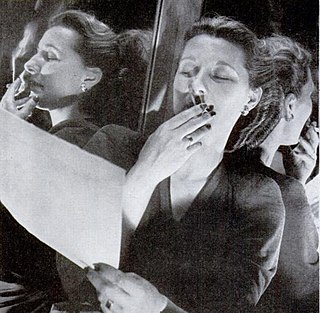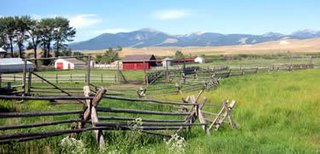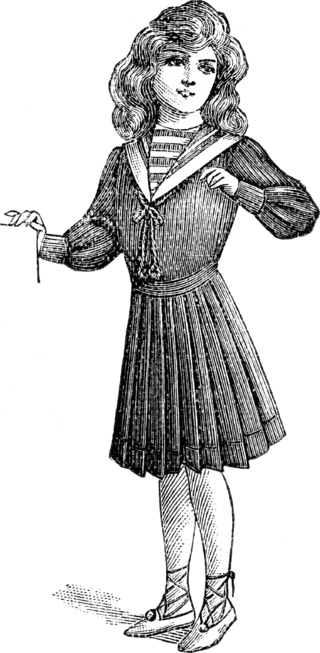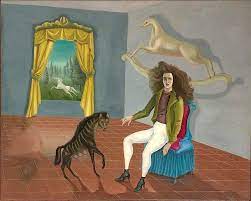Related Research Articles

The Johnson County War, also known as the War on Powder River and the Wyoming Range War, was a range conflict that took place in Johnson County, Wyoming from 1889 to 1893. The conflict began when cattle companies started ruthlessly persecuting alleged rustlers in the area, many of whom were settlers who competed with them for livestock, land and water rights. As violence swelled between the large established ranchers and the smaller settlers in the state, it culminated in the Powder River Country, when the ranchers hired gunmen, who invaded the county. The gunmen's initial incursion in the territory alerted the small farmers and ranchers, as well as the state lawmen, and they formed a posse of 200 men that led to a grueling standoff which ended when the United States Cavalry on the orders of President Benjamin Harrison relieved the two forces, although further fighting persisted.

A cowboy is an animal herder who tends cattle on ranches in North America, traditionally on horseback, and often performs a multitude of other ranch-related tasks. Cattle drives ensure the herds health in finding pasture and bring them to market. The historic American cowboy of the late 19th century arose from the vaquero traditions of northern Mexico and became a figure of special significance and legend. A subtype, called a wrangler, specifically tends the horses used to work cattle. In addition to ranch work, some cowboys work for or participate in rodeos. Cowgirls, first defined as such in the late 19th century, had a less well-documented historical role, but in the modern world work at identical tasks and have obtained considerable respect for their achievements. Cattle handlers in many other parts of the world, particularly in South America and stockmen and jackaroos in Australia, perform work similar to the cowboy.

The vaquero is a horse-mounted livestock herder of a tradition that has its roots in the Iberian Peninsula and extensively developed in Mexico from a methodology brought to the Americas from Spain. The vaquero became the foundation for the North American cowboy, in Northern Mexico, Southwestern United States, and Western Canada.

Charles Marion Russell, also known as C. M. Russell, Charlie Russell, and "Kid" Russell, was an American artist of the American Old West. He created more than 2,000 paintings of cowboys, Native Americans, and landscapes set in the western United States and in Alberta, Canada, in addition to bronze sculptures. He is known as "the cowboy artist" and was also a storyteller and author. He became an advocate for Native Americans in the west, supporting the bid by landless Chippewa to have a reservation established for them in Montana. In 1916, Congress passed legislation to create the Rocky Boy Reservation.
A guest ranch, also known as a dude ranch, is a type of ranch oriented towards visitors or tourism. It is considered a form of agrotourism.

Cowboy culture is the set of behaviors, preferences, and appearances associated with the attitudes, ethics, and history of the American cowboy. The term can describe the content or stylistic appearance of an artistic representation, often built on romanticized impressions of the wild west, or certain aspects of people's lifestyle, such as their choices in recreation, apparel, and western or southwestern cuisine.

Deborah Kay Butterfield is an American sculptor. Along with her artist-husband John Buck, she divides her time between a farm in Bozeman, Montana, and studio space in Hawaii. She is known for her sculptures of horses made from found objects, like metal, and especially pieces of wood.

Rancho Deluxe is a 1975 neo-Western comedy film directed by Frank Perry. Jeff Bridges and Sam Waterston star as two cattle rustlers in modern-day Livingston, Montana, who plague a wealthy ranch owner, played by Clifton James.

A stock horse is a horse of a type that is well suited for working with livestock, particularly cattle. The related cow pony or cow horse is a historic phrase, still used colloquially today, referring to a particularly small agile cattle-herding horse; the term dates to 1874. The word "pony" in this context has little to do with the animal's size, though the traditional cow pony could be as small as 700 to 900 pounds and less than 14 hands high.

Fanny Young Cory was a cartoonist and book illustrator best known for her comic strips Sonnysayings and Little Miss Muffet. Cory was one of America's first female syndicated cartoonists.

Clare Potter was a fashion designer who was born in Jersey City, New Jersey in 1903. In the 1930s she was one of the first American fashion designers to be promoted as an individual design talent. Working under her elided name Clarepotter, she has been credited as one of the inventors of American sportswear. Based in Manhattan, she continued designing through the 1940s and 1950s. Her clothes were renowned for being elegant, but easy-to-wear and relaxed, and for their distinctive use of colour. She founded a ready-to-wear fashion company in Manhattan named Timbertop in 1948, and in the 1960s she also established a wholesale company to manufacture fashions. Potter was one of the 17 women gathered together by Edna Woolman Chase, editor-in-chief of Vogue to form the Fashion Group International, Inc., in 1928.

A ranch is an area of land, including various structures, given primarily to ranching, the practice of raising grazing livestock such as cattle and sheep. It is a subtype of farm. These terms are most often applied to livestock-raising operations in Mexico, the Western United States and Western Canada, though there are ranches in other areas. People who own or operate a ranch are called ranchers, cattlemen, or stockgrowers. Ranching is also a method used to raise less common livestock such as horses, elk, American bison, ostrich, emu, and alpaca.

Granville Stuart was an American pioneer, gold prospector, businessman, civic leader, vigilante, author, cattleman and diplomat who played a prominent role in the early history of Montana Territory and the state of Montana. Widely known as "Mr. Montana", Granville's life spanned the formative years of Montana from territorial times through the first 30 years of statehood. His journals and writings have provided Montana and western historians unique insights into life in the Northern Rocky Mountains and Great Plains during the second half the 19th century.

Montana is a 1950 American Western film directed by Ray Enright and starring Errol Flynn. It was only the second time Flynn played an Australian on screen, the first time being Desperate Journey (1942).

A sailor dress is a child's or woman's dress that follows the styling of the sailor suit, particularly the bodice and collar treatment. A sailor-collared blouse is called a middy blouse. In early 20th-century America, sailor dresses were very popularly known as Peter Thomson dresses after the former naval tailor credited with creating the style.

Tonto Basin Outlaws is a 1941 American western film directed by S. Roy Luby. The film is the tenth in Monogram Pictures' "Range Busters" series, and it stars Ray "Crash" Corrigan as Crash, John "Dusty" King as Dusty and Max "Alibi" Terhune as Alibi, with Jan Wiley, Tris Coffin and Edmund Cobb. Despite the film's title, the action takes place in Montana, not Arizona's Tonto Basin. Like the other of the Range Busters series, the film was shot at Corriganville Movie Ranch and used footage from silent Westerns.

Joyce Growing Thunder Fogarty, is a Native American artist. She is of the Assiniboine Sioux, Dakota people, and is known for her beadwork and quillwork. She creates traditional Northern Plains regalia. The Smithsonian named her as "one of the West's most highly regarded beadworkers".

Self-Portrait is a painting executed by artist Leonora Carrington and is currently in the collection of the Metropolitan Museum of Art. She began the painting in London in 1937 and completed it in Paris in 1938. It is one of her most recognized works and has been called her "first truly Surrealist work." The presence of horses and Hyenas soon became a common feature in her work.
Fra Broadwell Dinwiddie Dana was an American painter. Dana showed promise early in her life as a gifted painter, studying at acclaimed art schools and learning under masters in the style of impressionism. Her artwork and legacy, which went relatively unnoticed during her lifetime, has gained greater recognition in the decades following her death.
Bobby Brooks Kramer, was a hall of fame equestrian and rodeo performer. She was one of the earliest bronc riders who competed for money. She had a successful rodeo career. After that, she and her husband formed the Diamond A Horse Ranch. She won many awards and trophies in cutting, trail, reining, and pleasure riding. She was inducted into the National Cowgirl Museum and Hall of Fame in 2000.
References
- 1 2 3 4 5 6 7 Willard, Frances E., and Mary A. Livermore. "Morgan, Miss Maria". A woman of the century: Fourteen hundred-seventy biographical sketches accompanied by portraits of leading American women in all walks of life. New York: Moulton, 1893, pp. 520-21.
- 1 2 Winslow, Helen M. "Some Newspaper Women". The Arena 17 (December 1896 – June 1897), p. 129.
- 1 2 3 4 5 6 7 "Morgan, Maria". Appletons' Annual Cyclopaedia and Register of Important Events 17, p. 561.
- 1 2 Logan, Mrs. John A. The Part Taken by Women in American History, p. 864.
- 1 2 Rice, Rosella. "Middy Morgan". Arthur's Home Magazine 49, pp. 47–49.
- ↑ "Middy Morgan". The Literary World 13 (May 20, 1882), p. 161.
- ↑ "Middy Morgan". Pacific Rural Press 21:26 (June 25, 1881), p. 452.
- 1 2 McBride, Marion A. "Women as Journalists in America". The Pall Mall Budget 34 (May 13, 1886), p. 22.
- ↑ Harris, Sharon M. Dr. Mary Walker: An American Radical: 1832–1919.
- 1 2 Jordan, Teresa. Cowgirls: Women of the American West, pp. 136–37.
- ↑ Lewis, Jon E. The Mammoth Book of the West. Hachette UK, 2012.
- ↑ Gere, Charlotte. "European Decorative Arts at the World's Fairs: 1850–1900". The Metropolitan Museum of Art Bulletin, Winter 1998–99, p. 29.